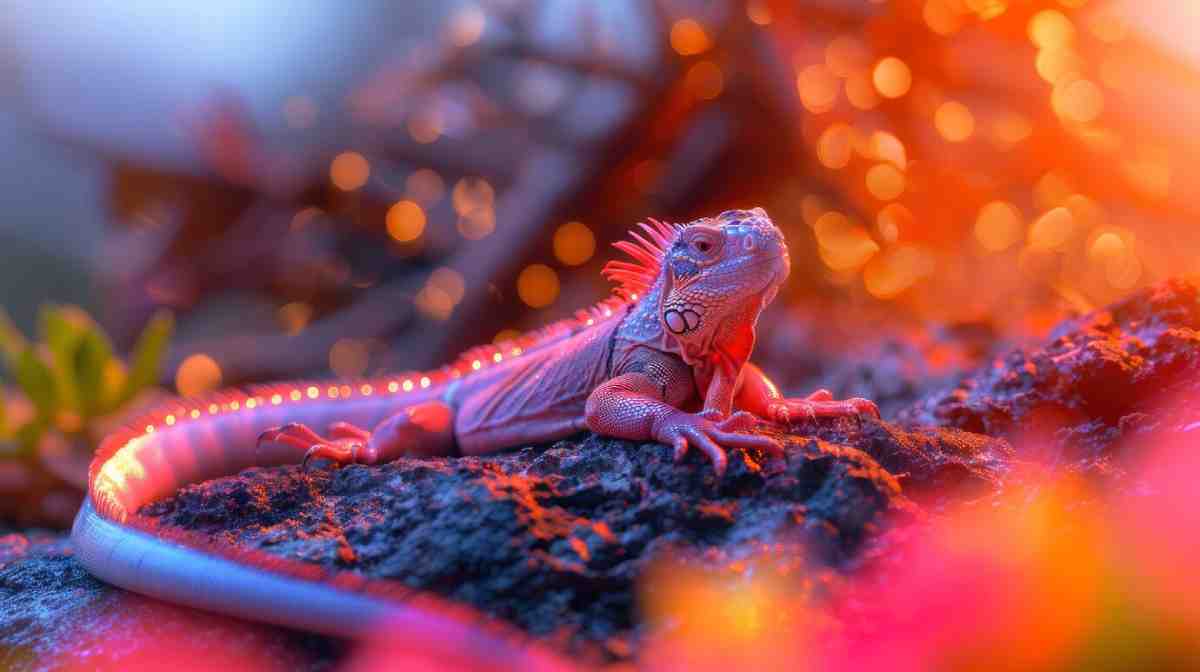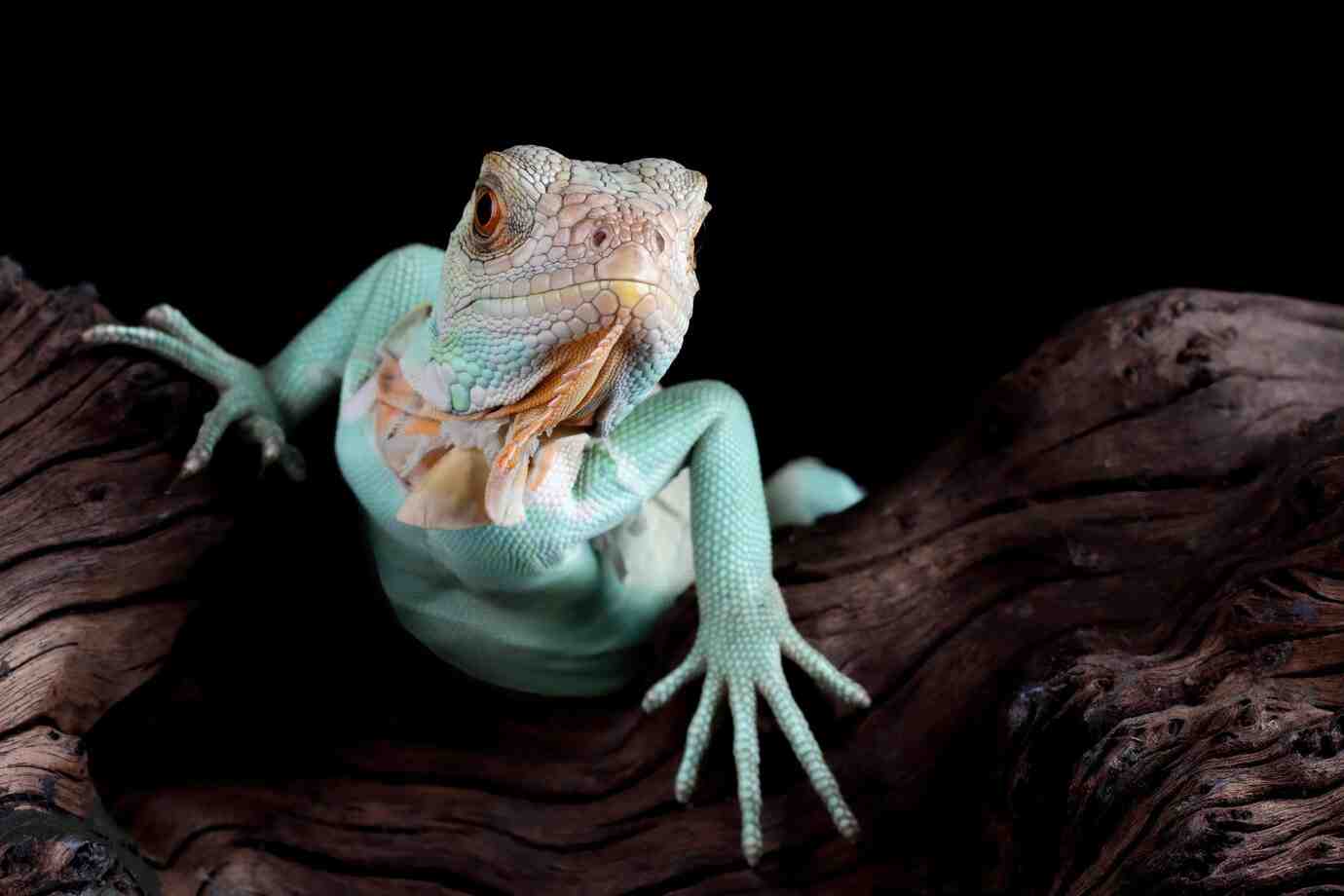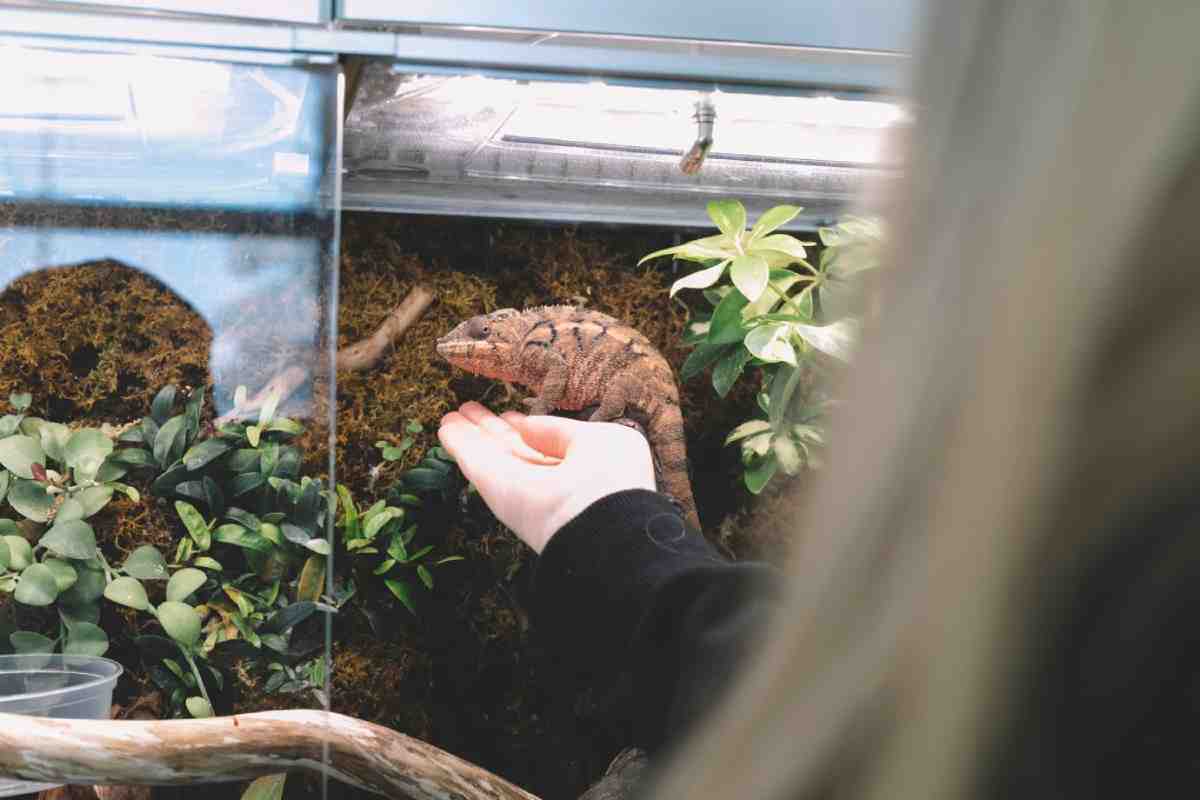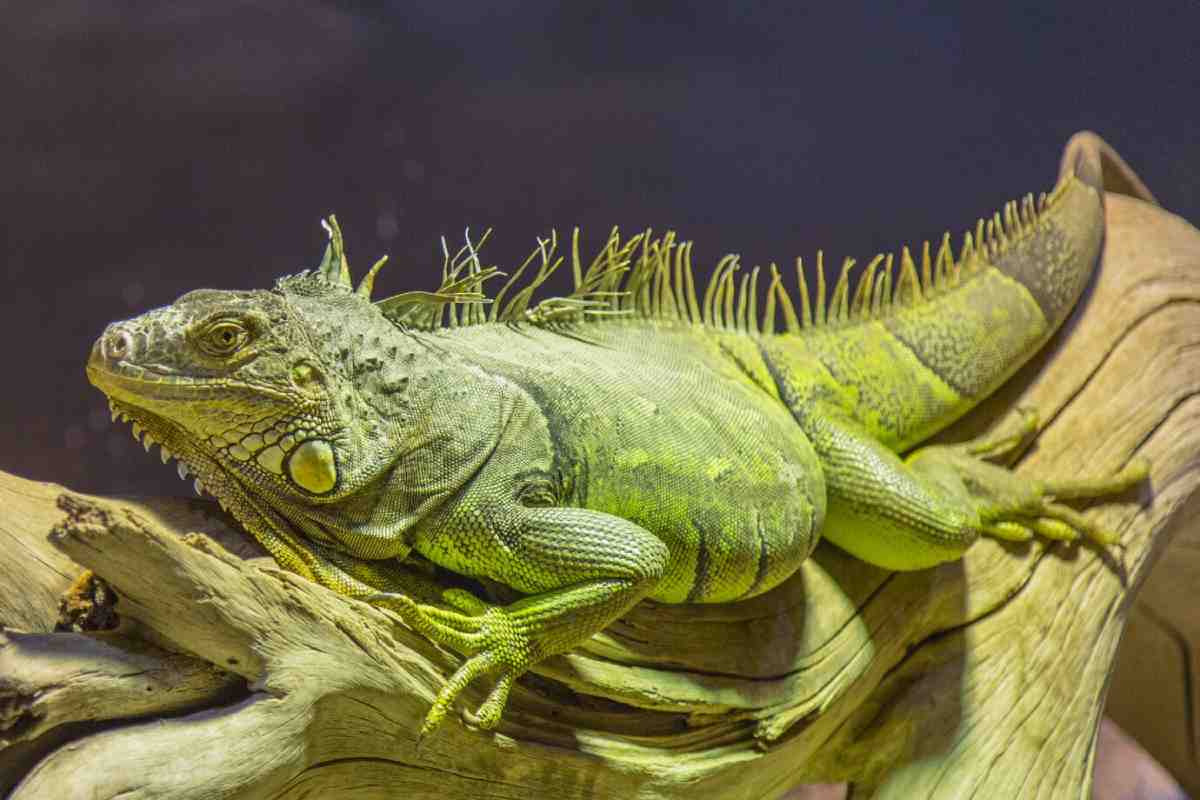
Caring for Green Iguanas at Home
Green iguanas are stunning reptiles. With their bright scales, long tails, and dinosaur-like appearance, they capture attention the moment you see them. But they’re also one of the most challenging reptiles to care for at home.
Unlike smaller lizards, green iguanas need a large space, a plant-based diet, and daily handling to remain tame. This guide walks you through green iguana care, covering everything from feeding and handling to iguana enclosure setup and long-term needs.
Whether you’re thinking of adopting one or have just brought one home, this post gives you the tools to raise a healthy, happy iguana.
What Makes Green Iguanas Unique
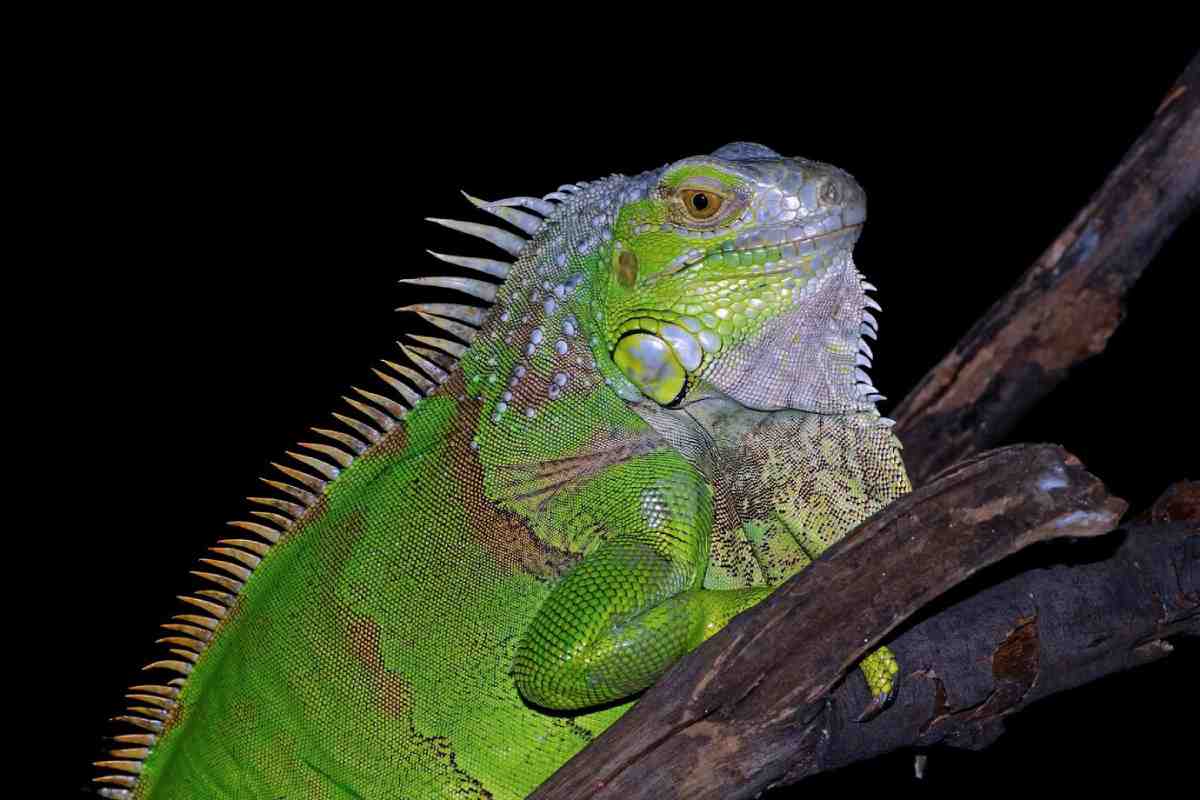
Green iguanas (Iguana iguana) are native to Central and South America. They live in tropical forests and spend most of their time in trees. In the wild, they bask in sunlight and feed on a wide variety of leafy plants and fruits.
Key Traits:
- Herbivorous (eat only plants)
- Arboreal (love to climb)
- Can grow up to 5–7 feet long
- Live 10–20 years with proper care
- Intelligent and can recognise their keepers
Green iguanas are not low-maintenance pets, but with commitment, they can become tame and rewarding companions.
Green Iguana Care: What to Know Before You Start
Many iguanas are rehomed because their owners weren’t prepared for their needs. Here’s what to understand from the start:
- They grow large — most adults reach 5–6 feet
- They need a massive enclosure or free-roam room
- They require daily interaction to stay tame
- Their diet is strict — no insects or animal proteins
- They need strong UVB lighting to stay healthy
If you’re up for the challenge, the reward is a striking, curious pet that bonds with you over time.
Iguana Enclosure Setup: Space and Structure
A baby iguana can live in a 40-gallon tank for a few months, but adults need far more room.
Minimum Enclosure Size for Adults:
- Length: 6 feet
- Height: 6 feet (they climb!)
- Depth: 4 feet
You can buy or build a walk-in enclosure, or convert a small room into a secure iguana space. It should include:
- Multiple climbing branches and basking shelves
- Secure walls and mesh top for airflow
- Easy access for cleaning and handling
- High humidity (more on that below)
Heating and Lighting
Like all reptiles, iguanas need heat to digest food and UVB light to process calcium.
Heating:
- Basking spot: 35–40°C
- Cool side: 26–29°C
- Night temp: Don’t drop below 22°C
Use a ceramic heater or heat lamp on one end of the enclosure to create a temperature gradient.
UVB Lighting:
- Use a T5 HO UVB bulb (10.0 or 12%)
- Replace every 6–12 months
- Run for 12 hours daily
- Mount the bulb inside the enclosure — no screen between the iguana and light
Without proper UVB, iguanas can develop metabolic bone disease, a painful and life-threatening condition.
Humidity and Substrate
Green iguanas need humidity to stay hydrated and shed properly.
Ideal Humidity:
- 60–80% throughout the enclosure
How to Maintain It:
- Mist the enclosure 1–2 times a day
- Use a large water pan or reptile humidifier
- Place damp moss or plants inside
Substrate Options:
- Newspaper
- Reptile carpet
- Coconut fibre (if dry and regularly changed)
- Soil mix (only if pesticide-free and well-draining)
Avoid loose sand or bark chips — they’re hard to clean and can cause blockages if swallowed.
Iguana Diet Tips: Feeding for Long-Term Health
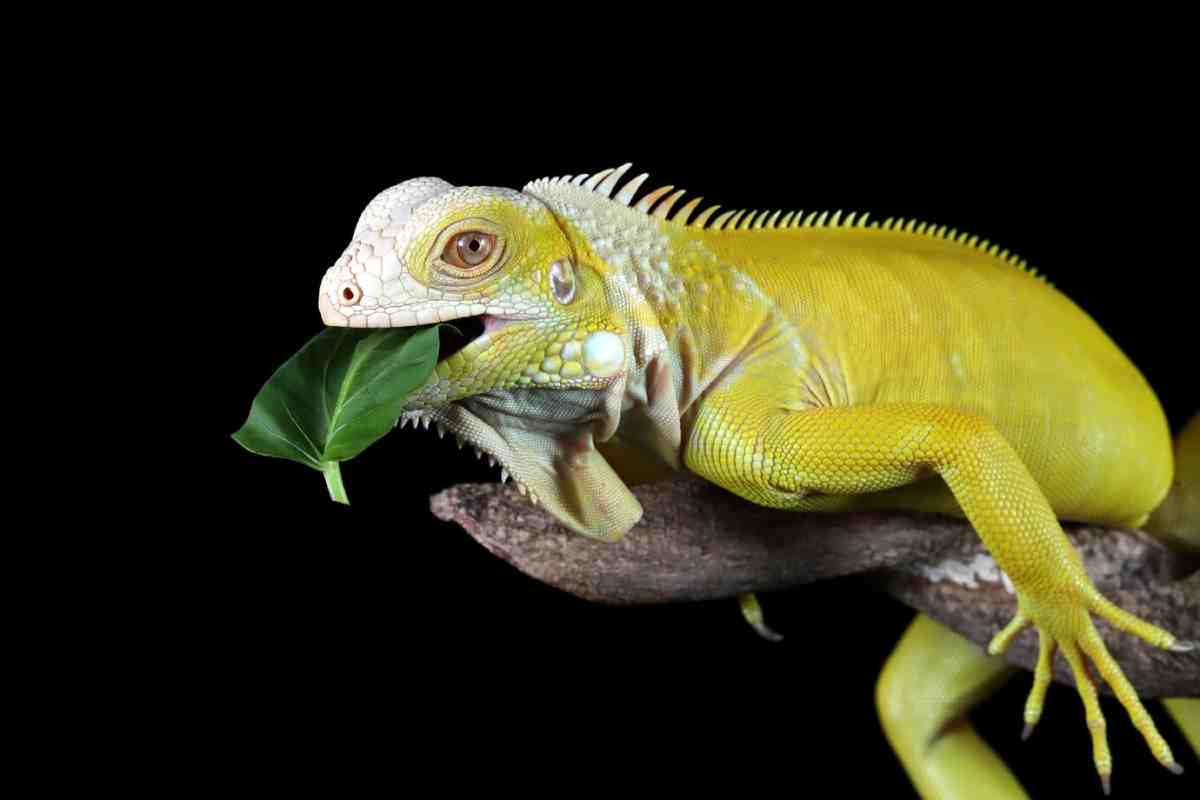
Iguanas are herbivores. That means no bugs, meat, eggs, or dairy — ever.
Daily Diet Breakdown:
- 70–80% dark leafy greens
- 10–20% vegetables
- 5–10% fruits (occasional treats)
Best Greens:
- Collard greens
- Dandelion greens
- Mustard greens
- Turnip tops
- Escarole
- Swiss chard
Safe Vegetables:
- Squash (butternut, acorn)
- Bell peppers
- Green beans
- Carrots (grated)
- Cucumber
Fruits (use sparingly):
- Mango
- Papaya
- Berries
- Banana (tiny portions)
- Apple slices (no seeds)
Chop food finely and mix it to encourage variety. Offer fresh food daily and remove leftovers within 2 hours.
Supplements
While a rich plant diet covers most needs, iguanas still benefit from a few key supplements.
What to Use:
- Calcium with D3: 2–3 times per week
- Multivitamin: Once a week
- Calcium without D3: Use if your UVB is very strong
Sprinkle powders lightly over fresh food. Avoid over-supplementing — balance is key.
Behaviour and Handling
Green iguanas are smart, but they’re also territorial and defensive at first. Consistent, gentle handling helps build trust.
Tips for Taming:
- Start with slow movements
- Let them approach your hand
- Handle daily, even if only for a few minutes
- Use calm tones and hand-feed treats
- Avoid grabbing from above (this mimics predators)
Be patient — it may take weeks or months for a new iguana to settle. Some never fully enjoy handling, while others become affectionate and interactive.
Shedding and Hygiene
Iguanas shed in patches. A healthy shed means no stuck skin, especially on toes or tails.
Shedding Support:
- Keep humidity high
- Offer misting and gentle baths
- Don’t pull off shed skin
- Add branches to help them rub it off naturally
Hygiene:
- Clean food dishes daily
- Spot-clean droppings
- Do a full enclosure clean weekly
- Wash your hands after handling (iguanas can carry salmonella)
Signs of Health (and When to See a Vet)
A healthy iguana is alert, active, and eating well. Here’s what to watch for:
Good Signs:
- Clear, bright eyes
- Healthy appetite
- Strong climbing behaviour
- Clean vent and regular droppings
- Smooth, complete shedding
Warning Signs:
- Not eating for days
- Swollen jaw or limbs
- Limp tail or bent bones
- Wheezing or open-mouth breathing
- Lethargy or hiding all the time
If you see any of these, contact a reptile-savvy vet right away.
Daily and Weekly Iguana Care Tasks
Daily:
- Feed fresh food
- Change water
- Mist the enclosure
- Check temperatures and humidity
- Observe behaviour
Weekly:
- Deep clean food and water dishes
- Spot-clean substrate
- Handle and inspect your iguana
- Monitor growth and appetite
Monthly:
- Replace UVB bulbs as needed
- Review and adjust enclosure layout
- Check supplement use and rotate greens
A Bold, Beautiful Commitment
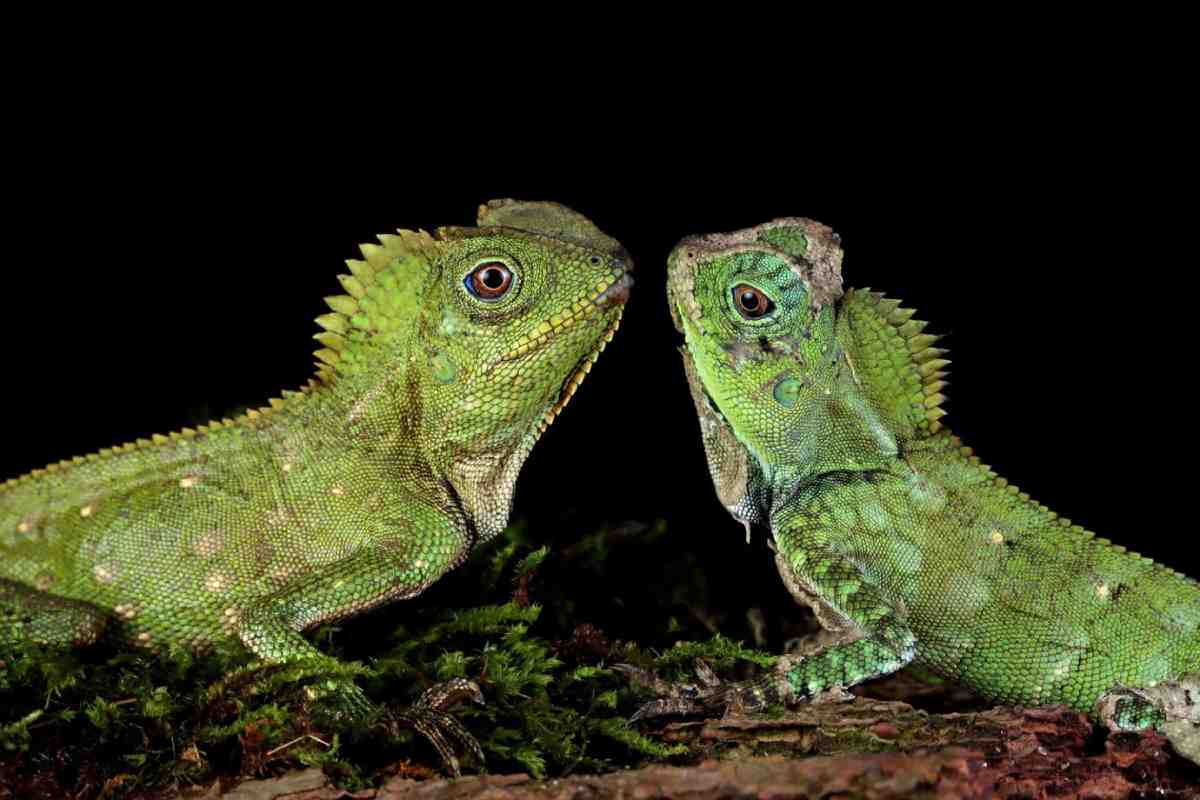
Green iguana care is not for the faint of heart. These reptiles grow big, live long, and need daily attention. But for the right person, they’re incredible companions. Watching your iguana explore, bask, and interact is an experience like no other.
If you have the space, time, and dedication, your green iguana will reward you with personality, presence, and years of connection.
